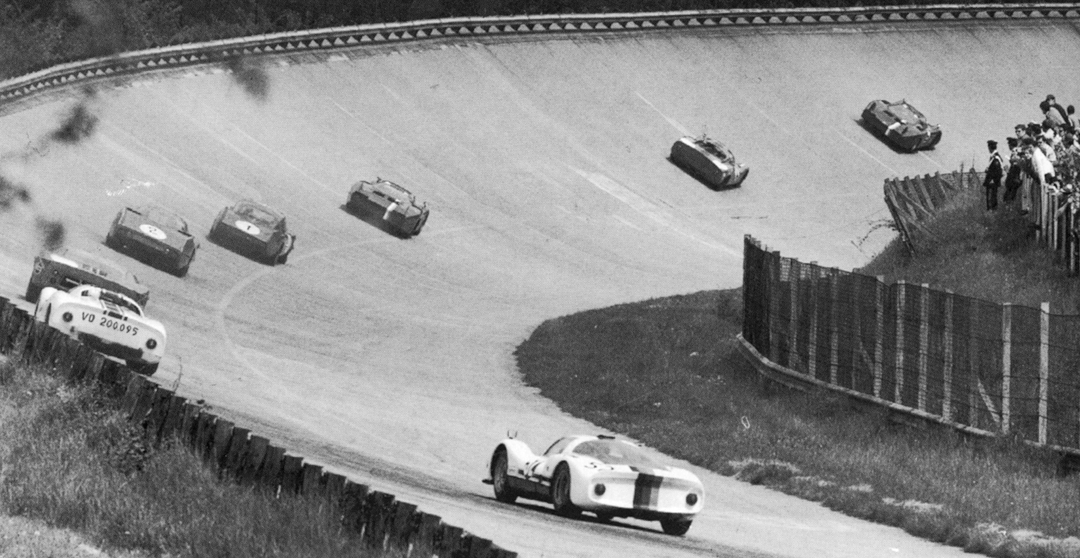There are some extremely important aerodynamic considerations which a driver must be aware of while racing with other cars at close quarters. If any two cars are within one or two car lengths of each other, they will have a considerable influence on each other’s drag (known as the drafting effect) and/or aerodynamic lift (known as stability effect). Drafting has been used by racers for years, but it wasn’t until a study by Chrysler in 1971 (SAE Paper No. 710213) that any real data was available to show how it worked. They also demonstrated the operation of the slingshot passing technique, in which the trailing car is always at an advantage.
The results of the Chrysler study showed that the aerodynamic drag of the trailing car was reduced by about one third as it approached the rear of another car. The drag on the leading car is reduced also, but not quite as much. Therefore, two or more cars working together can increase their top speed by a considerable amount, as long as they remain in tandem. When two cars pull abreast, the air drag increases on both. The slingshot effect comes from the fact that the trailing car can accelerate into the low drag wake created by the car ahead, and use that momentum to pull out and pass. When the pass is completed, the other car is then at the advantage, and can repass at the next straightaway. In actual practice on superspeedways, two relatively equal cars may maintain their positions until the last lap, when both try to be the trailing car to slingshot at the finish line.
No Subscription? You’re missing out
Get immediate ad-free access to all our premium content.
Get Started



